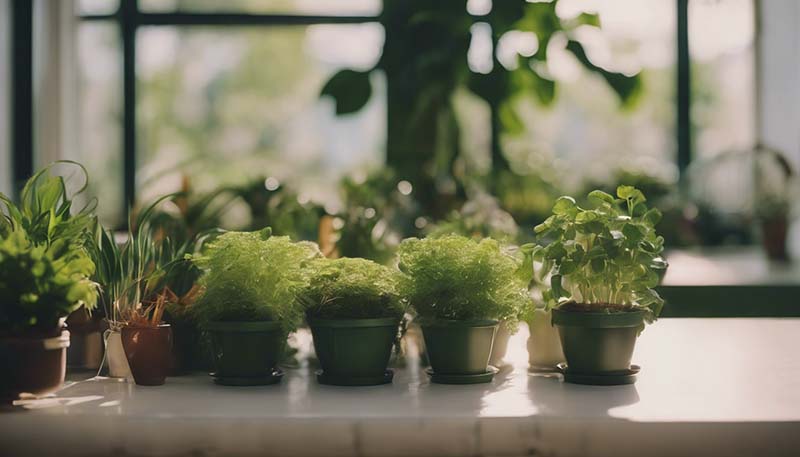Indoor Gardening and Health: The Benefits of Green Spaces
In today's fast-paced world, where urbanization often leads to a disconnect from nature, the concept of indoor gardening has become increasingly popular. The integration of green spaces within our living and working environments has been shown to have numerous benefits for our physical and mental health. This article delves into the various ways indoor gardening can enhance well-being and why incorporating plants into our indoor spaces is more than just a trend.
The Psychological Benefits of Indoor Plants
Stress Reduction: Studies have shown that being around plants can help reduce stress levels. The simple act of tending to indoor plants can provide a calming effect, lowering cortisol levels and promoting a sense of relaxation.
Improved Mood: The presence of greenery has been linked to an improved mood. Indoor plants can add a sense of freshness and positivity to a space, which can help combat feelings of depression and anxiety.
Advertisement
Increased Concentration: Research indicates that having plants around can improve concentration and productivity. The natural environment provided by indoor plants can create a more conducive atmosphere for focus and creativity.
The Physical Benefits of Indoor Gardening
Air Purification: Indoor plants are known for their ability to purify the air by absorbing toxins and pollutants. They act as natural air filters, improving the overall air quality and reducing the risk of respiratory issues.
Humidity Regulation: Plants can help regulate humidity levels indoors, which is particularly beneficial in dry climates or during winter months when heating systems can make the air uncomfortably dry.
Ergonomic Benefits: Indoor gardening can involve a range of physical activities such as bending, stretching, and carrying pots, which can contribute to overall physical fitness and help prevent sedentary behavior.
The Aesthetic and Social Benefits
Aesthetic Appeal: Indoor plants add visual interest to any space. They can be used to create a focal point, define spaces, or add color and texture to a room. The aesthetic value of plants can contribute to a more pleasant and inviting environment.
Social Interaction: Gardening, even indoors, can be a social activity. Sharing tips, plants, and the joy of gardening with friends and family can foster social connections and a sense of community.
Getting Started with Indoor Gardening
Choose the Right Plants: Not all plants are suitable for indoor conditions. Research which plants thrive indoors and select those that can adapt to the light, temperature, and humidity levels of your space.

Understand Light Requirements: Light is a critical factor for plant growth. Place your plants near a window with appropriate light exposure, or consider using grow lights if natural light is insufficient.
Water Wisely: Overwatering is a common mistake in indoor gardening. Learn about the specific watering needs of your plants and adjust your watering schedule based on the season and plant health.
Start Small: If you're new to indoor gardening, start with a few low-maintenance plants before expanding your indoor garden. This will help you gain experience and confidence in your gardening abilities.
Conclusion
Indoor gardening is more than just a hobby; it's a lifestyle that can significantly enhance your health and well-being. By incorporating plants into your living spaces, you can create a more pleasant environment that promotes physical health, psychological well-being, and social interaction. Whether you're looking to reduce stress, improve air quality, or simply add some life to your home, indoor gardening is a rewarding and beneficial practice for people of all ages and backgrounds.
Remember: Every garden, no matter how small, is a haven for the senses and a sanctuary for the soul.
Comment